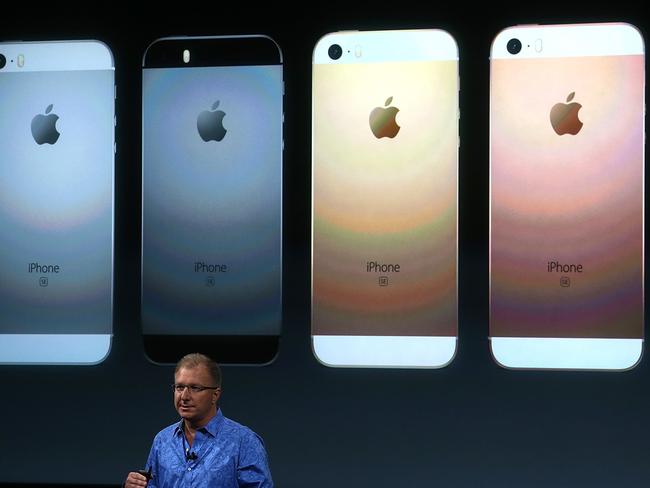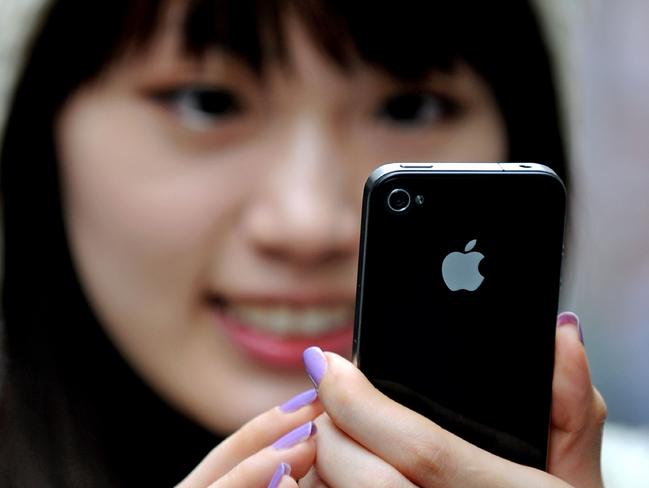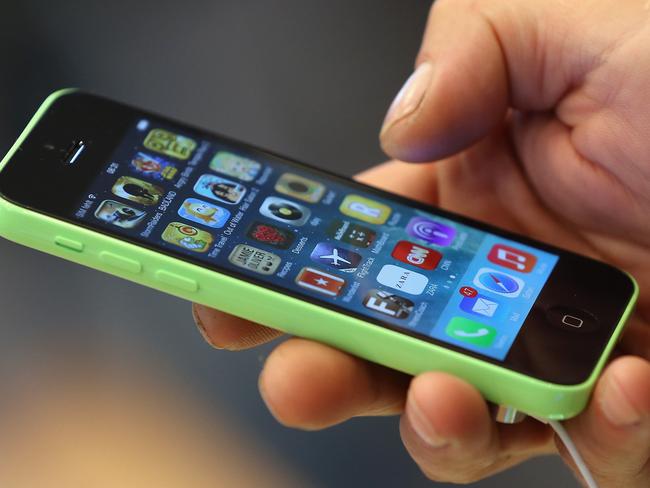Apple iPhone SE: Why Apple needs a smaller iPhone
THERE are two big lessons from Apple’s new iPhone announcement today: size matters but bigger is not always better, writes Rod Chester.
THERE are two big lessons from Apple’s new iPhone announced today: size matters but bigger is not always better.
Apple is going back to the future in releasing a smaller iPhone with a 4-inch screen, after upsizing to the 4.7-inch phablet with the iPhone 6 released last year.
The first reason why Apple is muddying the waters by extending the iPhone range starts with the obvious: some people prefer smaller screens.
UNVEILING: Apple iPhone SE and iPad Pro
Investment firm Piper Jaffray recently released a survey that showed 20 per cent of Americans preferred a smaller phone.
Closer to home, Australian technology analyst firm Telsyte last week released the Australian Smartphone and Wearable Devices Market Study which identified one reason why Apple needed to add a smaller iPhone to the range.
The report found 7.9 million smartphones were sold in Australia in 2015, which was a major drop of 11 per cent from the previous year.
The problem is not that people do not want a smartphone. It is that most have one and do not see a need to upgrade.
The smartphone market is nearing saturation with 17.6 million Australians already owning a smartphone. People will always upgrade their phone but the motivation to buy a new device when you’re satisfied with the current one is weak ... which is why tablet sales have also slowed down.

The Telsyte report predicts the new 4-inch iPhone could attract a key demographic — the 3.5 million Australians still using normal phones who see little need to do anything other than make calls or send texts on their phone.
The problem for that demographic is that there is a deadline looming.
Optus and Telstra are phasing out the 2G network in the next twelve months, which means people with very old pre-smartphone mobiles will need to upgrade.
Then there is the bigger picture for Apple which is always looking at new markets.
For Apple, a smaller iPhone is a bid to target emerging markets in China, India and the Middle East.
The thinking is clear. There are many people happy with the iPhone they have. This is an iPhone for everyone else.
Apple iPhone SE is the new 4″ midrange iPhone https://t.co/mJkoNwcvwL pic.twitter.com/rlLboKC0up
— Gadget Detail (@GadgetDetail) March 21, 2016
The history of the iPhone
* Steve Jobs unveiled the iPhone at the Macworld Conference in 2007. The New York Times later published a behind-the-scenes expose of that first presentation that revealed that the first prototypes were buggy and Jobs performed a series of talk on a “golden path” which was a strict sequence in demonstrating features with the smallest chance of the early model phone crashing during the demo.
* The iPhone was released in the US in June 2007 and it took Apple 74 days to sell 1 million of them.

* The iPhone 3G was released in June 2008. It was the first iPhone to come shipped with the App Store and had a 2 megapixel rear camera. Apple sold 1 million in the first weekend.
* The iPhone 3GS was released the following year and Australia didn’t get the iPhone until the June 2008 release of the 3GS. The 3GS sold one million in the first weekend. New features included a video camera, a built-in compass and the camera was improved from 2 megapixels to 3 megapixels.
* The iPhone 4 came out in 2010 with a new design although it retained the 3.5-inch screen. The iPhone 4’s swag of new features included Retina display, FaceTime thanks to the addition of a front-facing camera and the rear-facing camera jumped from 3 megapixels to 5 megapixels. Apple sold 1.7 million in the first weekend.
The launch of the iPhone 4 was marred by two things: an Apple employee left a prototype in a bar that ended up in the hands of tech journalists and antennagate, a problem with the reception on the metal phone that was addressed by giving away bumper cases to anyone who wanted one.

* Tim Cook led a team of executives in announcing the iPhone 4s in October 2011. The phone’s list of upgrades included an improvement in the camera to 8 megapixels and the introduction of Siri. It sold more than four million in the first weekend.
* With the iPhone 5 launched in September 2012, the iPhone got a 4-inch screen and the 32-pin connector was dumped for the Lightning cable. The iPhone 5 sold more than 5 million in the first weekend.
* iPhone 5s and the iPhone 5c were released in September 2013. The 5s introduced an improved home button with Touch ID and a “flatter” software interface, while the 5C came in a colourful plastic case and was similar to the iPhone 5 on the inside. In the first weekend, Apple sold nine million iPhone 5s and 5c models.

* The iPhone 6 and iPhone 6 Plus were released in September 2014, pushing Apple into the phablet market with a 4.7-inch and 5.5-inch screen plus a new more curved design. Apple sold more than 10 million in the first weekend.
* The iPhone 6s and iPhone 6s Plus were released in September 2015, with new features including Live Photos, 3D Touch and both the rear and front-facing cameras were boosted to 12 megapixel and 5 megapixels. Apple sold more than 13 million in the first weekend.
The history of the iPad
* Steve Jobs announced the iPad in January 2010 and released it in April. Apple sold 300,000 iPads on day one.
* The iPad 2, still one of the most commonly used iPad models, was released in 2011, It was thinner and included front and rear cameras although retained the 9.7-inch display. Analysts estimated Apple sold 500,000 on the first weekend.
* Apple released the third-generation iPad in March 2012 calling it the new iPad. The model was soon superseded but its notable for introducing a high-resolution Retina display to the iPad range and the rear camera jumped from 0.9 megapixels to 5 megapixels. It sold 3 million in the first weekend.
* In October of the same year, Apple announced the iPad Mini with a 7.9-inch display and the fourth-generation iPad. Apple sold three million in the first weekend.
* In October 2013, the design of the iPad was revamped with the thinner, lighter and more powerful iPad Air. The Air went on sale in November, two weeks before the iPad Mini 2. Apple did not release sales figures for the first weekend.
* In October 2014, Apple released the iPad Air 2 and iPad Mini 3. Again it did not release first weekend sales.

* In 2015, Apple did not release an update to the 9.7-inch iPad but it released the iPad Pro with a 12.0-inch display and a smart connector for attaching a keyboard without Bluetooth. Apple did not release first weekend sales.
* Rod Chester travelled to Cupertino, California, as a guest of Apple.



